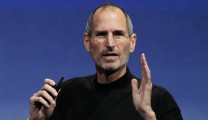What Does Distributed Leadership Mean?
Let’s start by answering the most important question: “What is distributed leadership?”
As the name suggests, distributed leadership involves a distribution of power. Many people — who all share goals and are committed to the same mission — share responsibility and contribute to the decision-making process.
The distributed leadership model often appears in schools and higher education institutions. However, many businesses have also begun adopting it in an attempt to create more collaborative work environments.
One of the most well-known proponents of distributed leadership, Spillane (a professor at Northwestern University), has also said that for this tactic to be effective, “multiple individuals, with or without leadership positions, should take up leadership responsibilities.”
Origins of Distributed Leadership
Several theories serve as the basis for distributed leadership, including distributed cognition and activity theory.
Distributed Cognition
Distributed cognition combines psychology, sociology, and neuroscience. It posits that knowledge and thinking apply across various situations and contexts.
Anthropologist Edwin Hutchins is often credited with developing this theory in the 1990s. When studying naval aircraft navigation, he found that cognition is “socially distributed” and influenced by people, tools, and situations rather than coming from one individual.
Activity Theory
Activity theory approaches human behaviour as being contextualised in different situations. It strives to understand the individual through the broader system in which they participate.
Activity theory scholar Barbara Rogoff argued that this approach does not separate the individual from the interdependent system. They must also be understood on three distinct levels: interpersonal, cultural/community, and institutional/cultural.
The Theory Of Distributed Leadership
It’s not enough to understand what distributed leadership is. You must also understand the theoretical framework on which it’s built. What is distributed leadership theory?

Distributed leadership theory centres around three main ideas:
- Leadership results from an interacting group or network rather than one single person’s actions.
- Expertise should be distributed across the organisation instead of concentrated in a select group of individuals’ hands.
- Leadership opportunities should be open to people who might have previously been excluded.
The distributed approach shares some commonalities with other popular leadership models, such as democratic, participative, and shared leadership. It is unique, though, because it views leadership as something fluid and ever-changing. Responsibility is distributed based on expertise, and participants take various factors into account, including diversity, maturity, and cultural values.
The Principles Of Distributed Leadership
Eight distinct principles govern distributed leadership and differentiate it from other leadership styles. The principles are as follows:
Shared Responsibility
One of the first tenets of distributed leadership is the idea that leadership results from many individuals’ behaviours rather than a single person’s actions or decisions. This leadership theory posits that a mix of leadership styles and a diverse group of participants can yield better results and help teams achieve their goals.
Shared Power and Authority
Similarly, the distributed model believes that power and authority should be shared rather than limited to one individual.
Instead of one person making decisions for the entire organisation, the group should focus on making sure everyone feels empowered to participate and contribute to the dialogue. This mindset helps to promote cooperation across the organisation and can lead to better morale, as well as better decisions.
Synergy
Synergy is the idea that interaction or cooperation between two or more entities produces a more substantial effect than either entity could make alone. In other words, the sum is greater than its parts.
The concept of synergy is critical to distributed leadership. This theory of leadership falls apart without a belief that several people working together and contributing can do more and produce better outcomes than one person carrying all the decision-making power.
Leadership Capacity
Those who support the distributed leadership approach believe that an organisation’s leadership capacity is determined by the collective knowledge of its members or employees. The entire organisation benefits when everyone develops new skills and expands their knowledge.
In a distributed leadership-focused organisation, individuals are also expected to contribute to the group’s leadership capacity rather than take a passive role. Individuals are also nurtured for their leadership potential and given opportunities to demonstrate their abilities.
Organisational Learning
In a collectively managed, distributed organisation, knowledge should be developed, shared, and applied in the same way.
In addition to taking ownership of their problems, team members are encouraged to develop a shared set of values and beliefs. They should also collaborate to assist with knowledge sharing and move the organisation in the right direction.
Equitable and Ethical Climate
When properly practiced, distributed leadership can contribute to a more ethical and equitable organisation. In such an organisation, a diverse range of people participates in the decision-making process.
When a larger group of people play a role, there is less of a risk of poorly thought out or potentially unethical decisions. There is also less of a chance of people not being heard or valued. After all, the entire leadership framework is built around the idea that everyone should participate and share their viewpoints.
Democratic and Investigative Culture
A company or organisation’s culture describes what its members do and why they do it. Distributed leadership naturally lends itself to a more democratic culture where everyone gets a say and has a chance to provide insight.
The distributed approach also creates a more investigative culture in the workplace. Because all members are expected to take responsibility for their goals and share their knowledge, they may be more interested in developing new skills or learning new information that can help them enhance their contributions to the whole.
Macro-Community Engagement
Those who support the distributed leadership model also acknowledge it’s impossible to control all aspects of a complex environment. That’s why those who practice this approach don’t try to do that. Instead, proponents of distributed leadership focus on individual interconnectedness and exchange/reciprocity among communities.
The Benefits Of Distributed Leadership
This leadership approach is quickly growing in popularity throughout the world. The following are some of the most significant benefits organisations can experience when they adopt it:
Customer and Market-Focused
A distributed style of leadership allows for better knowledge distribution among employees, including customer-facing employees. When these employees have easier access to knowledge and don’t have to wait for it to flow down from a senior leader at the top of the chain of command, they can provide better customer service. Better customer service, in turn, contributes to a more satisfied audience.
Shared knowledge also allows for a better understanding of the industry and an organisation’s target market. Better understanding helps all employees, regardless of their position, to make more informed decisions. More informed decisions, in turn, contribute to better performance and longevity.
Increases Innovation and Job Satisfaction
Employees and team members who are part of an organisation that practices distributed leadership may have higher levels of job satisfaction compared to those who are led by more autocratic or authoritarian leaders.
When everyone feels that their voice and insights matter, they may be more inclined to stick with their employer long-term. Furthermore, they may be more innovative and willing to present new ideas since they know they will be heard and considered.

Reduces Corporate Exposure
One of the fundamental principles of distributed leadership is an equitable and ethical climate. Increased equity and a greater focus on ethics help to reduce the risk of corporate malfeasance.
When everyone shares knowledge and a sense of responsibility (rather than one or a limited number of people holding all the power), there is more transparency throughout the organisation. Increased transparency helps to protect the organisation from potential bad press.
Furthermore, the shared nature of distributed leadership also reduces the risk of valuable information leaving the company when one employee moves on to a different position.
Imagine if one person held all the power and information at an organisation. If that person were to quit their job or be removed from their position, much of that information would leave with them.
Cultivates and Discovers New Leaders
When it’s properly implemented and practised, distributed leadership creates more opportunities for potential leaders to demonstrate their abilities.
If everyone has the opportunity to share new ideas or contribute to decision-making processes, that means there are no limits on who can speak up. New team members are just as welcome to participate as senior employees.
In some organisations, it’s hard for junior employees to feel confident sharing their input. In fact, they might be actively discouraged from doing so. The opposite is true in organisations that value distributed leadership.












Replies to This Discussion